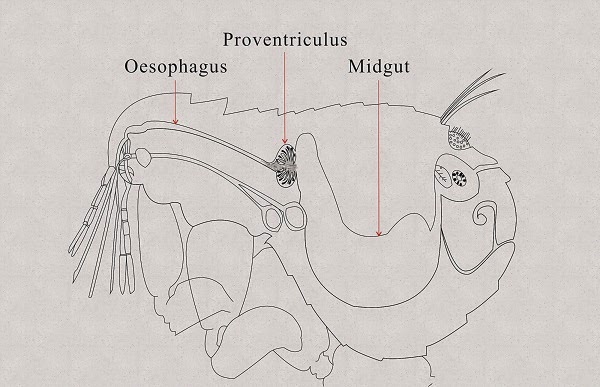Greetings everybody,
We introduce to you guys a new Sunday post where we look through the TV guides of the top three channels (as thought by us) and highlighting the shows to watch this week!
So lets get on with it then shall we.

When we was watching this breathtaking series we were amazed at just how little we actually knew about this continents diversity and landscapes. In this series you will be presented with draw dropping panoramic shots and so much more. It is a real treat for the eyes and it is all available to you through Eden.
P.S there will be repeats of the show through the day so you have no excuse not to watch all the shows! Enjoy
What an amazing line up on TV this week! Never thought shortlisting would be so difficult. We hope that you enjoy our recommendations or if you know that there is another show that we left out please tell us by leaving a comment!
Biobunch,
over and out.
Minor note: we got the TV guide based primarily on UK TV listings, for your local shows please look at the three channels mentioned above in case there is a change of timing or programming.
We introduce to you guys a new Sunday post where we look through the TV guides of the top three channels (as thought by us) and highlighting the shows to watch this week!
So lets get on with it then shall we.
Nat Geo Wild: Wild Nile- Thursday 28th August 10:00PM
Have a closer look at the Nile and become more inter mate with the life and biodiversity that this river is able to support, including some awesome rare birds Scarlet-tufted Sunbird.
Nat Geo Wild: Wild Thailand- Sunday 31st August at 5:00PM
Well excited for this show! We at Biobunch tend to forget that Thailand contain some amazing wildlife. Be sure to check it out. Did you guys know that Thailand has 50 national parks AND that they are home to 10% of Earths species! If you didn't you sure will after this awesome series.
No worries if you miss the one at 5:00PM there is another showing at 7:00.
No worries if you miss the one at 5:00PM there is another showing at 7:00.
Animal Planet: Big Cat Diary: 7-8 AM every morning of next week!
Well we sure are happy here at Biobunch to see these three faces grace our screen again with so much Big Cat drama it could rival 'Eastenders'. Thank you to Animal planet you are LEGENDARY for putting this beautiful series back on again. Thing is guys this is on at the above times but if you are like us the day does not start until gone 9 so there is only one solution. Series Link!!! or just go forwards and record each one (trust us it is worth it).
Animal planet: Dirty Jobs- 9-5 on Monday 25th August.
Call us behind if you will, but we had no idea that this was even a show! The moment we realised however we said that we must draw others to this show. Now we know what you guys are thinking 9-5?? is that not a working day but guess what it is Bank Holiday Monday so just sit in your living room and watch some dirty jobs!
PS we are particularly interested in the ones including being a cricket farmer and performing tests on the endangered Alligator snapping turtles. Apart from Monday they are all pretty much dotted around everywhere so... Series Link it if you have tivo or have a look on the animal planet website and see which ones you really want to watch!
Animal Planet: Monsters inside me- all through the week!!
Now if your up for something truly weird and sometimes border line disgusting then we advise you watch this show! Through this show you will learn more about the parasitic and micro world than any A level student and sometimes any degree level student!
We highlight these episodes in particular:
Tuesday August 26th- Sex Maniacs: Have a closer look into parasite reproduction. And have a look at how parasites are breeding in a women's lung!!
Wednesday August 27th- Living With the Enemy: In this episode we are presented with a young women attacked by an invincible brain eating monster. And a New Yorker has been infected with deadliest parasite on the planet.

Eden: Africa- Starting from 1:00 on Monday 25th August!
Described as one of the worlds wildest continents Africa's wildlife is very widely known... or is it?When we was watching this breathtaking series we were amazed at just how little we actually knew about this continents diversity and landscapes. In this series you will be presented with draw dropping panoramic shots and so much more. It is a real treat for the eyes and it is all available to you through Eden.
P.S there will be repeats of the show through the day so you have no excuse not to watch all the shows! Enjoy
Eden: Wild Canada- Friday 29th August 12:00- 16:00
Join Eden as they take us on a journey though a truly wild and dynamic landscape. They will shows us some of the most natural secrets that Canada has to offer us such as the worlds biggest intact forest. Make sure to watch it we will!!
What an amazing line up on TV this week! Never thought shortlisting would be so difficult. We hope that you enjoy our recommendations or if you know that there is another show that we left out please tell us by leaving a comment!
Biobunch,
over and out.
Minor note: we got the TV guide based primarily on UK TV listings, for your local shows please look at the three channels mentioned above in case there is a change of timing or programming.

















































